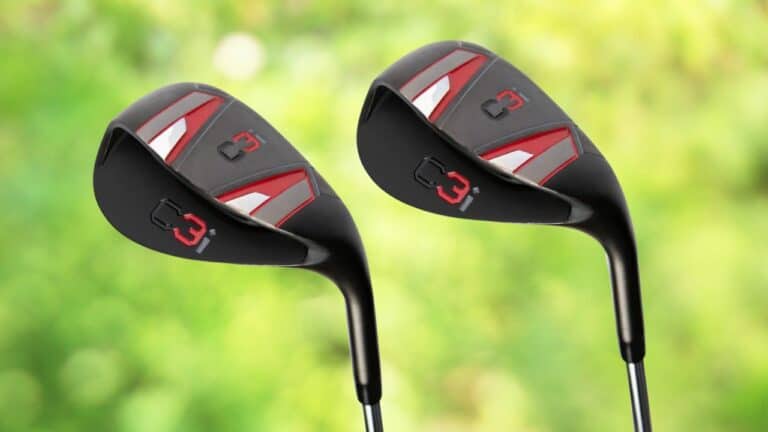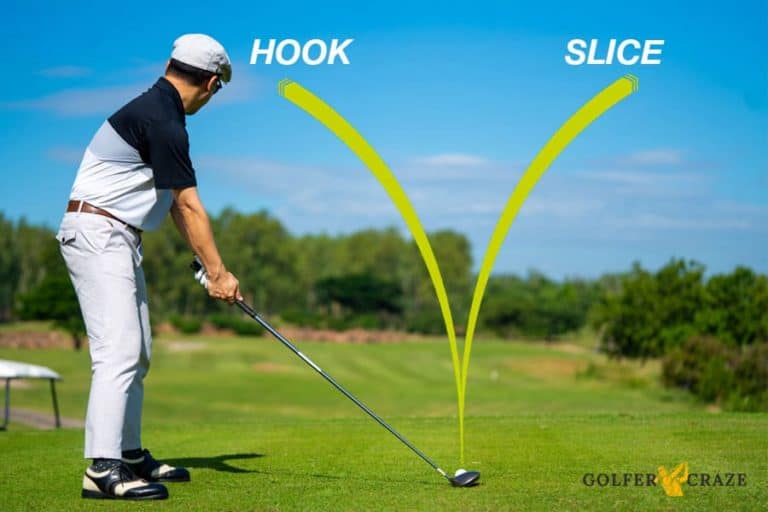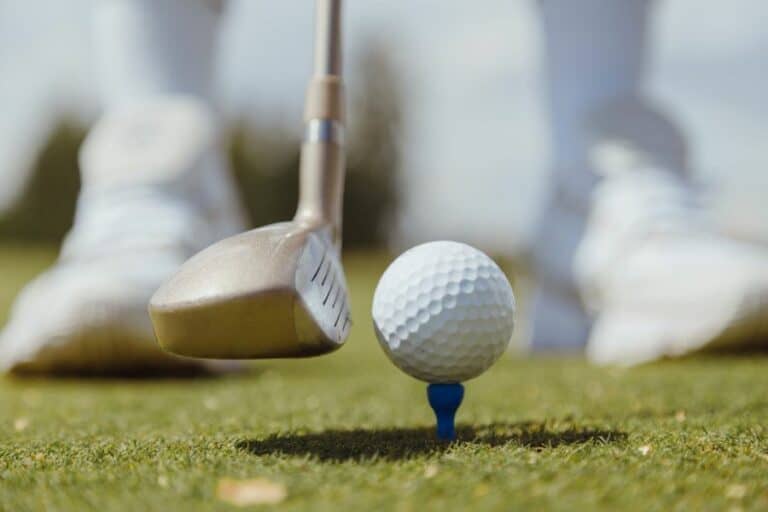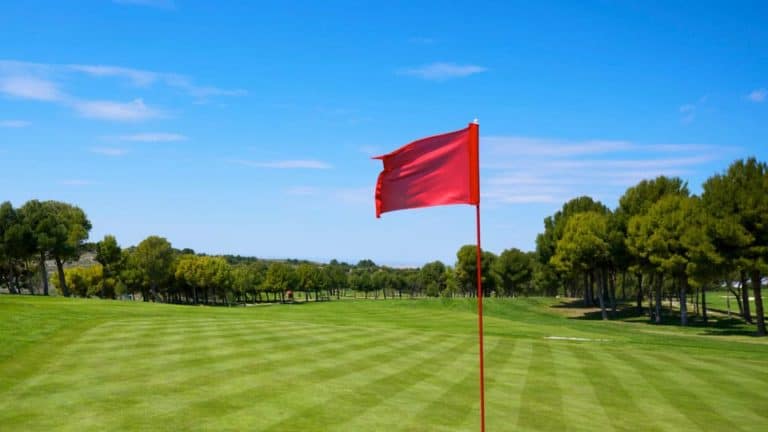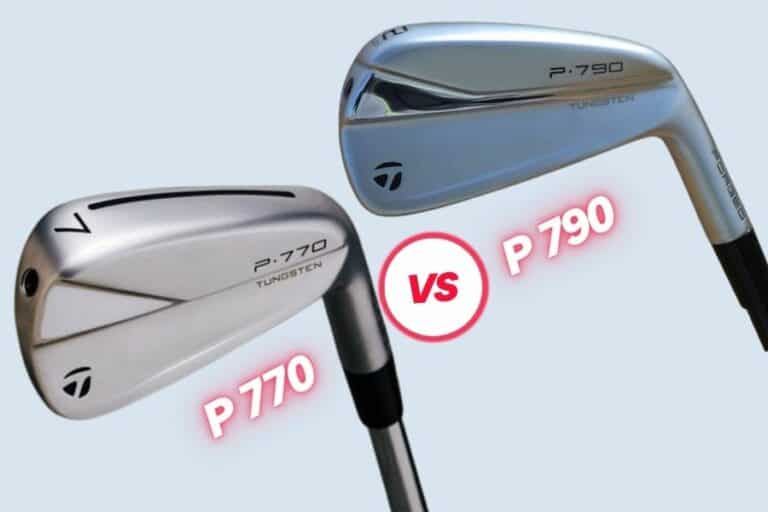58 vs. 60 Degree Wedge: Which One Should You Use?
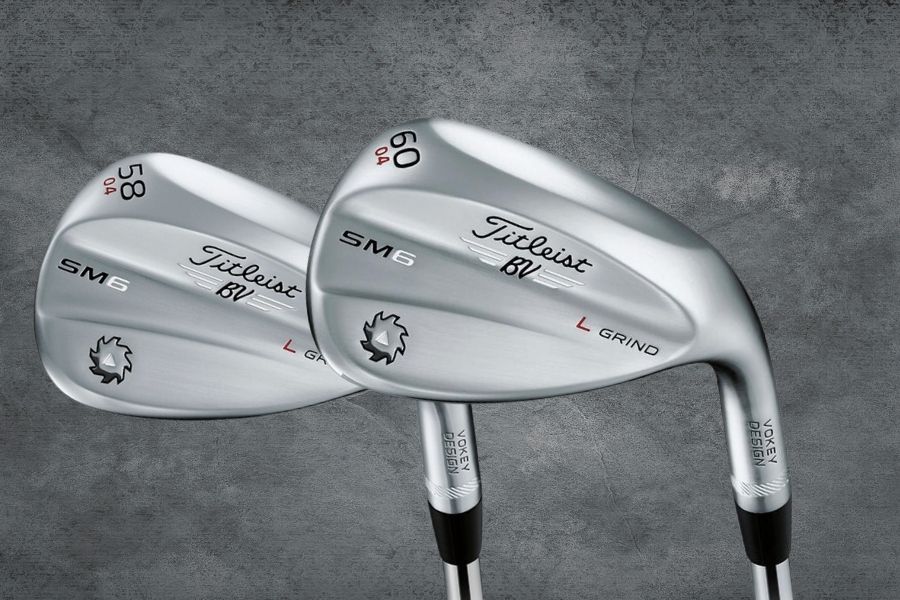
Looking to improve your golf game with the perfect wedge? Discover the difference between a 58 vs. 60 degree wedge and find the right fit for your swing.
When it comes to golf wedges, choosing the right degree can greatly impact your game. The difference between a 58 and 60 degree wedge may seem small, but it can make a significant difference in your ability to execute specific shots around the green.
58 vs. 60 degree wedge: Which wedge should i carry to cover what distances?
Whether you choose to carry a 58-degree or 60-degree wedge depends on your personal preferences, the kinds of shots you must make, and the distance you intend to go. Both clubs are mostly used to hit high, soft-landing shots with a lot of spin and are categorized as high-lofted wedges.
The general distances you can go with each club are as follows:
58-degree wedge:
A versatile club, the 58-degree wedge can be used for a variety of shots around the green. Depending on your swing speed and the amount of spin you produce, it can normally go 50 to 105 yards.
60-degree wedge:
A specialized club called a 60-degree wedge is made for strokes that need the most height and spin possible. From deep rough or sand, it’s a great club for hitting high, soft-landing shots. Depending on your swing speed and the amount of spin you produce, it can normally go 60 to 100 yards.
When to use a 58-degree wedge?
A 58-degree wedge is a golf club with a high loft that is often used for lobbing the ball high up in the air. It resembles a 60-degree wedge but has slightly less loft, providing it a more versatile alternative for golfers who prefer a lower trajectory on their wedge shots.
When you need to hit a short chip shot from a short distance, such as 15-20 yards or fewer, a 58-degree wedge can be a decent alternative to 60 degree wedge.
When to use a 60-degree wedge?
A 60-degree wedge is a golf club with a high loft that is commonly used for playing short, high shots around the green.
A 60-degree wedge can be a decent option for an average golfer who wants to hit a very short chip shot from a small distance about 10-15 yards. It enables you to launch the ball into the air and swiftly stop it on the green.
How far should you hit a 58 degree wedge?
Golfers typically hit their 58-degree wedge 80 yards, while the distance might range from 50 to 105 yards. Here’s a table representing the estimated distance:
| Golfer | Distance with 58 degree wedge |
| Average Male Golfer | 70-90 Yards |
| Average Female Golfer | 45-55 Yards |
| Professional Male Golfer | 105 Yards |
| Professional Female Golfer | 75 Yards |
How far should you hit a 60 degree wedge?
The typical distance of a golf ball hit with a 60-degree wedge is 50-75 yards, depending on the golfer’s clubhead speed and ball location in their golf stance.
Here’s a table representing the estimated distance:
| Golfer | Distance with 60 degree wedge |
| Average Male Golfer | 65-85 Yards |
| Average Female Golfer | 40-60 Yards |
| Professional Male Golfer | 100 Yards |
| Professional Female Golfer | 70 Yards |
Can you use a 58-degree wedge as a sand wedge?
Yes, you can use a 58-degree wedge as a sand wedge. It’s the best option for golfers who struggle with their sand shots and often leave the golf ball in the bunker. Choosing a high-bounce club will also help with playing bunker shots out of softer including the fluffier bunkers.
What is better to use: 58 or 60-degree wedge?
The majority of typical golfers choose a 58-degree wedge because it is easier to hit and has better distance control. 60-degree wedges should only be used by scratch or lower handicap golfers.
Do pros use a 58 or 60-degree wedge?
As a basic rule, the less loft there is on a wedge, the easier it is to hit for the typical golfer. A 58-degree wedge is more suited for lob wedge play. Wedges with a loft of 60 degrees or more are typically reserved for scratch players and professionals.
Is the 60-degree wedge harder to hit?
The increased loft angle of the club makes controlling distance and accuracy even more challenging, and the steep angle of the clubface necessitates a precise swing to make strong contact with the ball. However, the difficulty of hitting a 60-degree wedge can vary based on the golfer’s own swing characteristics and the course conditions.
If you’re facing shots or chips where you need to clear a large tree or have limited green to work with, opting for a 60 degree wedge would be a better choice. Similarly, when playing on a fast and challenging green or when the pin is located very close, a 60 degree wedge would come in handy.
What are the best 58 degree wedges and 60 degree wedges currently on the market?
Our team of experts has listed out the top five 58-degree and 60-degree wedges currently available on the market for you:
5 best 58-degree wedges
- Wilson Staff Model Men’s Golf Wedge
- TaylorMade Golf MG2 Wedge
- Callaway Golf Mack Daddy 5 JAWS Wedge
- 2020 Cobra Golf King Mim Black Wedge
- Titleist Vokey SM7 Lob Wedge 58 12 (Tour Chrome, D Grind)
5 best 60 degree wedges
- Callaway Mack Daddy CB Wedge
- Titleist Vokey SM9 Wedge
- TaylorMade MG2 Wedge
- Callaway Mack Jaws Full Toe Wedge
- Wilson Harmonized Wedge
- Cleveland CBX Full Face
Conclusion
Whether you buy a lob wedge with 58 or 60 degrees of loft depends on the lofts of your other wedges. To maintain gapping, buy a 58-degree lob wedge if you use a 50-degree gap wedge and a 54-degree sand wedge. If your gap and sand wedges split 52/56, choose a 60-degree lob wedge. Correct gapping improves wedge play and yardage more consistently.
FAQs
Should an average golfer carry a 60-degree wedge?
If you’re an experienced golfer with a single-digit handicap, it’s best to limit the number of 60-degree wedges you have in your bag. A pitching wedge and a sand wedge are all you truly need if you’re a novice or even an average golfer.
How far does the average golfer hit a 58-degree wedge?
Depending on factors including skill, swing speed, and course conditions, the average golfer can hit the ball upto 80 yards using a 58-degree wedge. Shots taken by more seasoned golfers may travel farther and be more accurate.
Can you hit a flop shot with a 58-degree wedge?
To hit a flop shot, you’ll need a soft, high-spinning ball and a wedge with a rolling, not straight, leading edge so the club may slide along the grass without digging. A 58- to 60-degree wedge is required.




